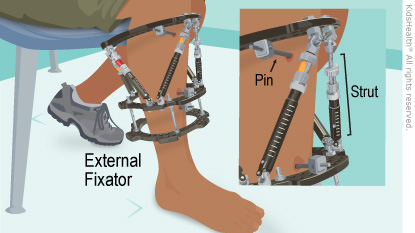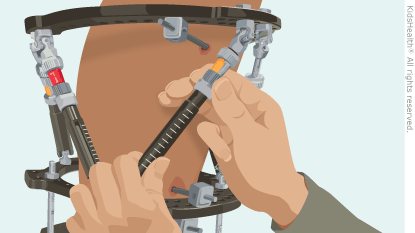- Home
- Parents Home
- Allergy Center
- Asthma Center
- Cancer Center
- Diabetes Center
- A to Z Dictionary
- Emotions & Behavior
- First Aid & Safety
- Food Allergy Center
- General Health
- Growth & Development
- Flu Center
- Heart Health
- Homework Help Center
- Infections
- Diseases & Conditions
- Nutrition & Fitness Center
- Play & Learn Center
- School & Family Life
- Pregnancy Center
- Newborn Center
- Q&A
- Recipes
- Sports Medicine Center
- Doctors & Hospitals
- Videos
- Para Padres
- Home
- Kids Home
- Asthma Center
- Cancer Center
- Movies & More
- Diabetes Center
- Getting Help
- Feelings
- Puberty & Growing Up
- Health Problems of Grown-Ups
- Health Problems
- Homework Center
- How the Body Works
- Illnesses & Injuries
- Nutrition & Fitness Center
- Recipes & Cooking
- Staying Healthy
- Stay Safe Center
- Relax & Unwind Center
- Q&A
- Heart Center
- Videos
- Staying Safe
- Kids' Medical Dictionary
- Para Niños
- Home
- Teens Home
- Asthma Center
- Be Your Best Self Center
- Cancer Center
- Diabetes Center
- Diseases & Conditions
- Drugs & Alcohol
- Expert Answers (Q&A)
- Flu Center
- Homework Help Center
- Infections
- Managing Your Medical Care
- Managing Your Weight
- Nutrition & Fitness Center
- Recipes
- Safety & First Aid
- School & Work
- Sexual Health
- Sports Center
- Stress & Coping Center
- Videos
- Your Body
- Your Mind
- Para Adolescentes
Limb Lengthening Surgery: External Fixator
Recovery after limb lengthening surgery with an external fixator goes best when you know what to expect. The surgery is a big commitment, and it takes most kids about a year to get back to full activity. With your help, your child can get the best results.
Why Is Limb Lengthening Surgery With An External Fixator Done?
The surgery is done when someone has a leg length discrepancy. This means that one leg is shorter than the other. It can also be done for other limb deformities (for example, to straighten bowed legs).
What Is an External Fixator?

An external fixator is a metal frame that holds bones in place. It has small rods (called pins) that go through the skin and into the bone. The external fixator used for limb lengthening has adjustable bars (called struts) that are turned to slowly lengthen the bone.
What Happens During Limb Lengthening Surgery?
The surgery is done by an surgeon. It has several steps:
- Your child will get general anesthesia to sleep through the surgery without feeling any pain.
- The external fixator is put around your child's leg. It's held in place by the pins that go through the skin and into the bone. This keeps the bone in place while new bone forms.
- An incision (cut) is made through the skin so the bone can be cut. This is where the new bone growth will happen.
- The incision is closed with stitches.
How Should We Prepare for Limb Lengthening Surgery?
Making some plans before the surgery will help you be prepared when your child comes home from the hospital. Some things to consider:
- Plan for your child to be in the hospital for about 3 days after surgery. While your child is in the hospital, you'll learn about caring for him or her once you go home. You might want to use a notebook or calendar to keep track of appointments, schedules, and other information.
- Plan who will help your child do things with the fixator in place. For the first few weeks after surgery, your child will need help getting dressed, going to the bathroom, and taking a shower.
- You (or another trusted adult) should prepare to help your child with stretching and strengthening exercises. These are a very important part of healing.
- Make arrangements for your child to be home from school for about 6 weeks. Talk to your child's school staff so that work can continue while your child is at home. Some schools can arrange for home tutoring.
- Know who will take your child to follow-up appointments with the orthopedic care team. This includes visits to the surgeon with X-rays done to see how the bone is growing. Also expect appointments with a physical therapist at least twice a week, and possibly a social worker or psychologist.
- Have clothes ready that will work with the fixator. For warm weather, shorts or a skirt/dress will fit over the fixator. For cool weather, you may need to cut sweatpants up the side to get them over the fixator. For underwear, split the side seam and sew or stick Velcro on it so it can be closed after it's pulled over the fixator.
- While your child is in the hospital, a social worker will help you get the equipment you need for home. This can include crutches or a walker, wheelchair, and shower chair. You will also learn about cleaning the pin sites and what you'll need to do that (such as sterile cotton swabs).
- Plan ahead to get help from family and friends. Caring for a child with a fixator is difficult and can be stressful. Arrange for another trusted adult to stay with your child for a few hours so you can get a little time for yourself.
What Happens After Limb Lengthening Surgery?
Your child needs your help after surgery. Following the orthopedic care team's instructions will help your child get the best result.

For about 6–8 weeks after surgery, you will need to:
- Turn the struts on the fixator every day to slowly lengthen the bone. The orthopedic care team will show you how to turn them. They'll give you a schedule that tells you how often and how much to turn the struts. For most kids, it is not painful to have the struts turned.
- Clean the fixator pin sites every day to prevent infection.
- Help your child do all stretching and strengthening exercises. These must be done twice a day to help the muscles stay strong and stretch to keep up with the growth of the bone.
- Help your child bear weight as instructed by the surgeon.
- Take your child to physical therapy and possibly aquatic therapy (physical therapy in a pool).
- Give your child medicine for pain and muscle spasms. Your child will have pain from the surgery and may have pain during the exercises and stretches. The pain medicine will include opioid medicines. Opioids are very good at treating pain, but they can be dangerous if not given as directed. They also can lead to dependence and addiction. It's important to safely give opioid pain medicine.
- Help your child get the nutrition needed to grow new bone and recover from surgery. He or she should eat a balanced diet that includes 3–4 servings of dairy and plenty of fruits and vegetables every day. Your care team also may recommend vitamin supplements.
- Take your child to appointments with the surgeon about every week. X-rays will be done at each visit.
About 6–8 weeks after surgery:
- You'll stop turning the struts when the bone has reached its desired length, but the fixator needs to stay in place for a while until the new bone is stronger.
- Your child should be ready to go back to school. Crutches, a walker, or a wheelchair will help him or her get around at school, but these probably won't be needed as much at home.
During this time, continue to:
- Clean the pin sites every day.
- Help your child do the stretching and strengthening exercises.
- Follow the orthopedic care team's instructions for helping your child bear weight and walk. Walking and bearing weight on the leg, helps the bone heal.
- Take your child to physical therapy and aquatic therapy.
- Go for follow-up appointments with the surgeon about every 4 weeks.
- Help your child eat a healthy diet.
The fixator is removed when the bone is healed, usually about 3–4 months after surgery. This is done at the hospital and your child will go home the same day. Your child may need a splint or cast for a few weeks after the fixator comes off.
Looking Ahead
After the fixator is off, your orthopedic care team will help you make an exercise plan for your child. They'll also talk about which activities are safe. The bone is still healing in the months after the surgery, so your child won't be able to do some things at first. By 6–12 months after surgery, most kids can do all the things they did before the surgery. With the improvements from the surgery, some things will be even easier to do!
Getting an external fixator for limb lengthening can be stressful for kids and parents. Keep a positive attitude that lets your child know that this is difficult, but that you can do it together. And if you or your child feel very stressed or overwhelmed, talk to the psychologist or social worker on your care team. The time and effort will be worth it when your child is healed and can enjoy the benefits of the newly lengthened leg.

© 1995- The Nemours Foundation. KidsHealth® is a registered trademark of The Nemours Foundation. All rights reserved.
Images sourced by The Nemours Foundation and Getty Images.
